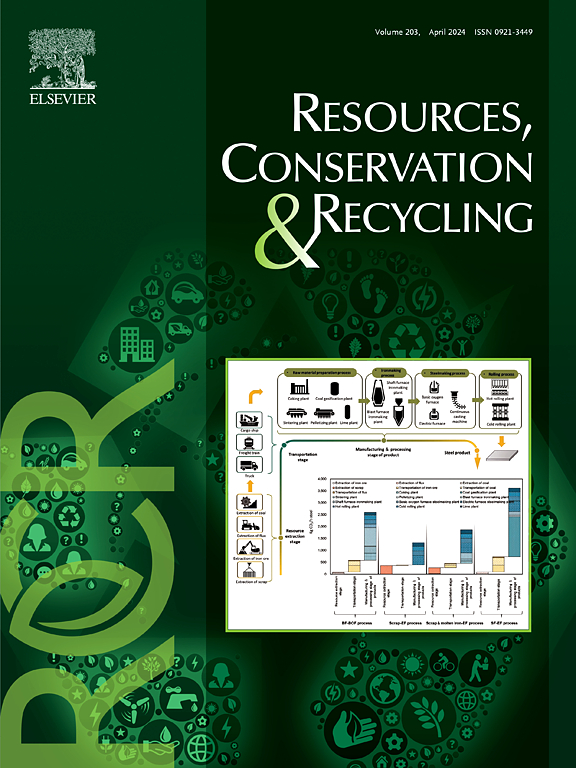Plant-level analysis of the CO2 emission reduction and water recovery potentials of near-term CCS-EWR retrofits coal-fired power plant in China
IF 11.2
1区 环境科学与生态学
Q1 ENGINEERING, ENVIRONMENTAL
引用次数: 0
Abstract
Carbon dioxide capture and storage combined with enhanced water recovery (CCS-EWR) presents a promising solution for climate change, but its deployment costs and environmental benefits remain uncertain. Coupling the source-sink matching model with the techno-economic model reveals the plant-level and spatio-temporal potential of carbon emission reduction and water recovery for CCS-EWR retrofitting for coal-fired power plants (CFPPs)in China. Results show the application will substantially decrease carbon emissions, with an average reduction of 1.32 Gt/a between 2025 and 2060. Additionally, there is an estimated 38.48 Gt of fresh water accessible, enabling 44.35 % of CFPPs to meet their initial water needs fully. Around 70.7 % of CFPP units become financially viable when the carbon price reaches 400 CNY/t. Spatio-temporal analyses provide insights into changes and progress in the implementation of CCS-EWR over time, and starting the deployment of CCS-EWR at an earlier stage will result in more favorable environmental advantages.

求助全文
约1分钟内获得全文
求助全文
来源期刊

Resources Conservation and Recycling
环境科学-工程:环境
CiteScore
22.90
自引率
6.10%
发文量
625
审稿时长
23 days
期刊介绍:
The journal Resources, Conservation & Recycling welcomes contributions from research, which consider sustainable management and conservation of resources. The journal prioritizes understanding the transformation processes crucial for transitioning toward more sustainable production and consumption systems. It highlights technological, economic, institutional, and policy aspects related to specific resource management practices such as conservation, recycling, and resource substitution, as well as broader strategies like improving resource productivity and restructuring production and consumption patterns.
Contributions may address regional, national, or international scales and can range from individual resources or technologies to entire sectors or systems. Authors are encouraged to explore scientific and methodological issues alongside practical, environmental, and economic implications. However, manuscripts focusing solely on laboratory experiments without discussing their broader implications will not be considered for publication in the journal.
 求助内容:
求助内容: 应助结果提醒方式:
应助结果提醒方式:


